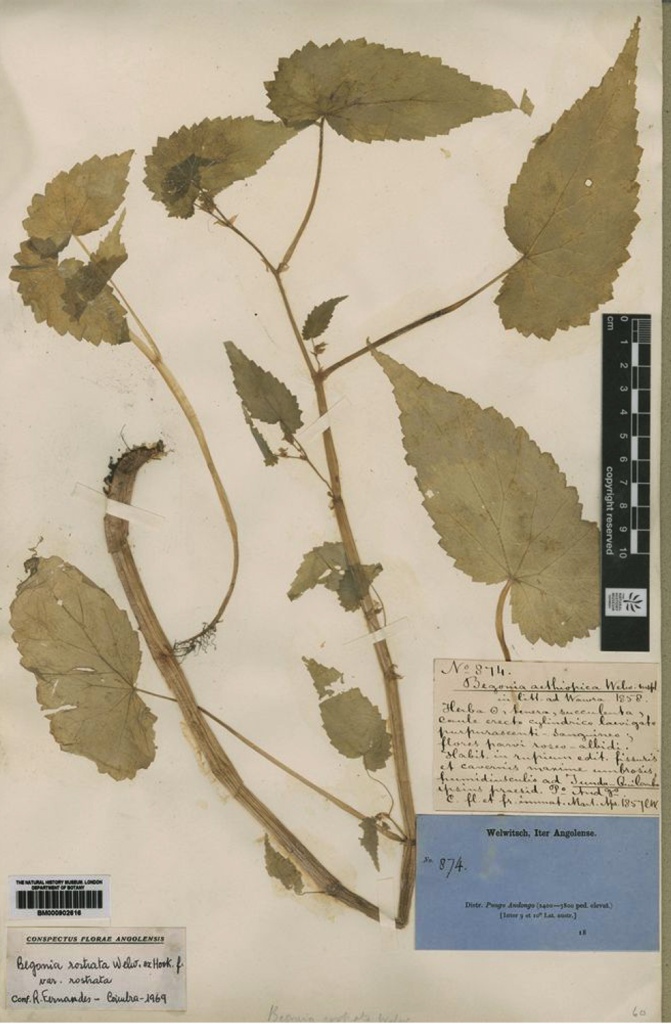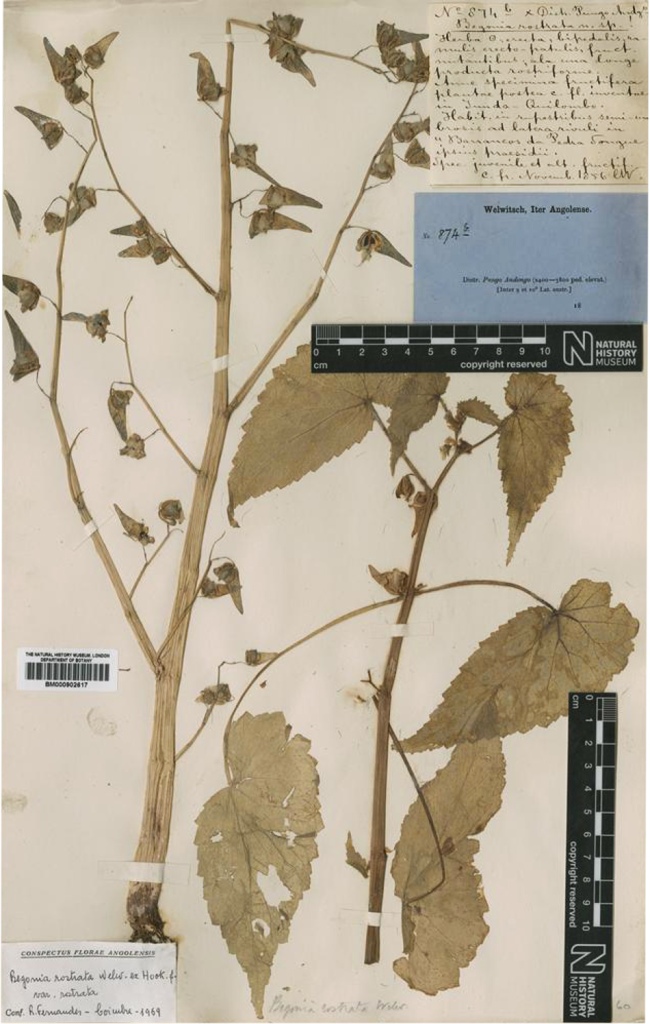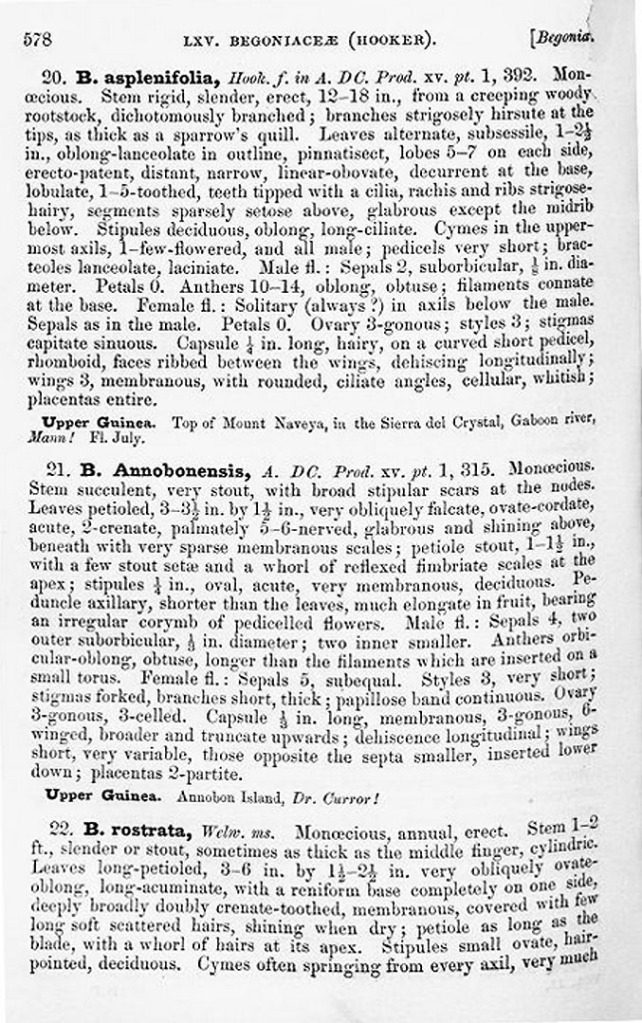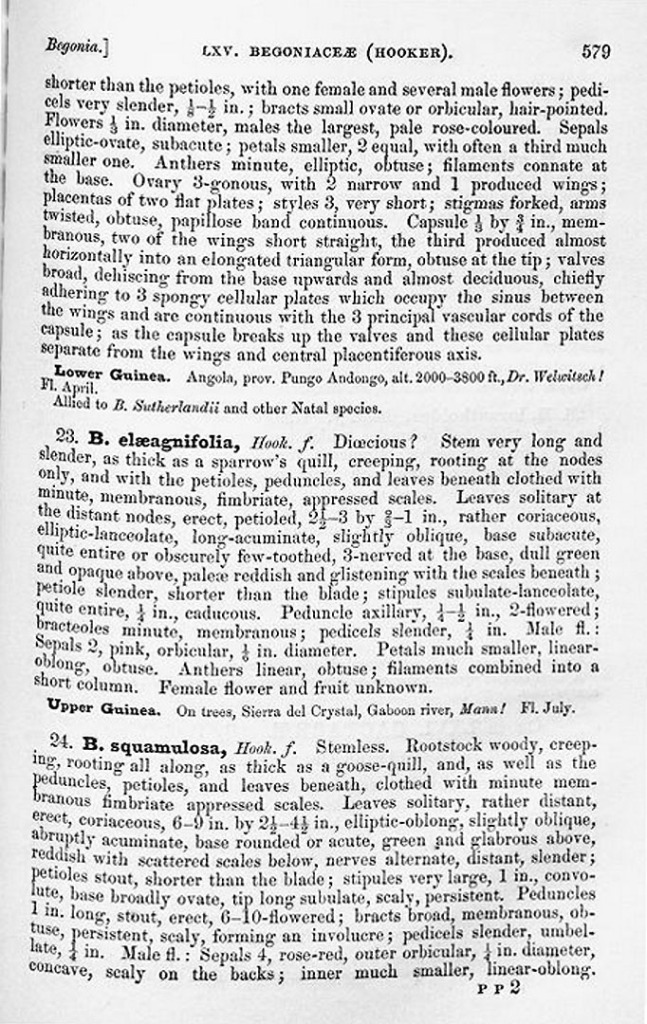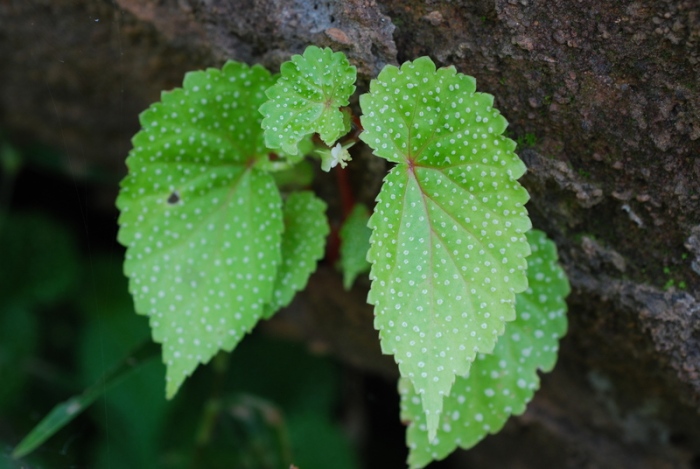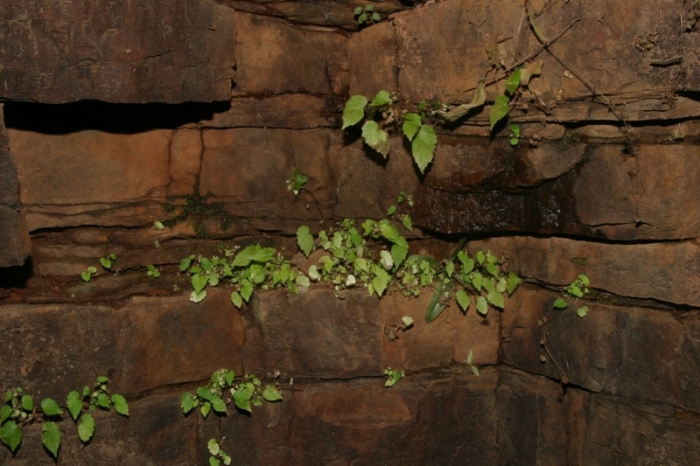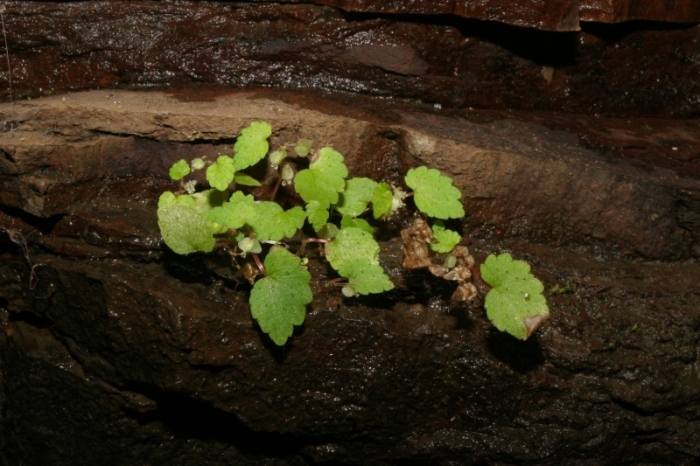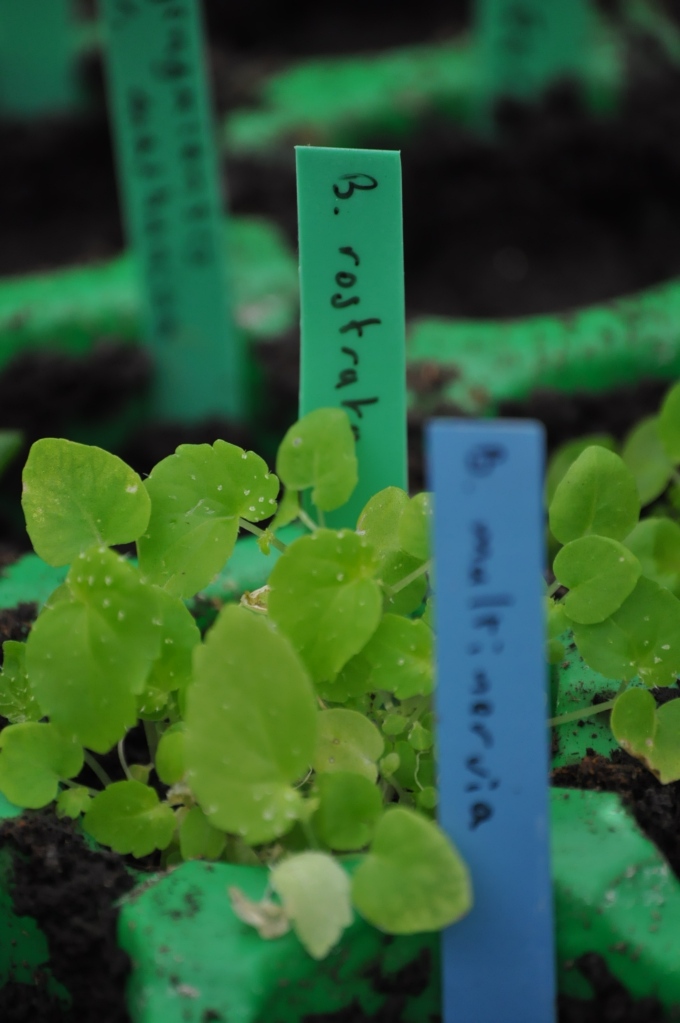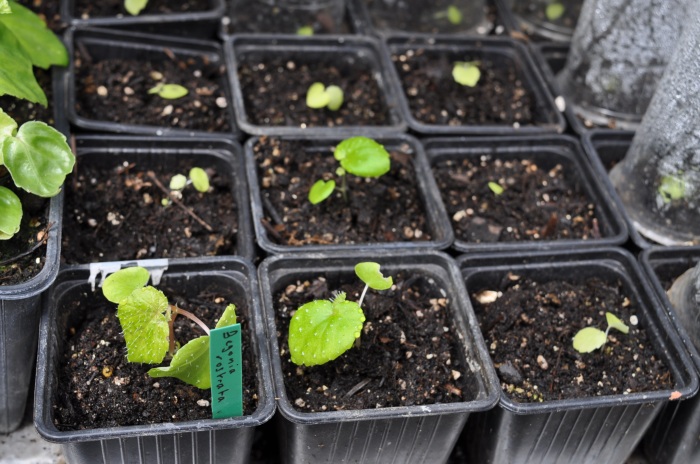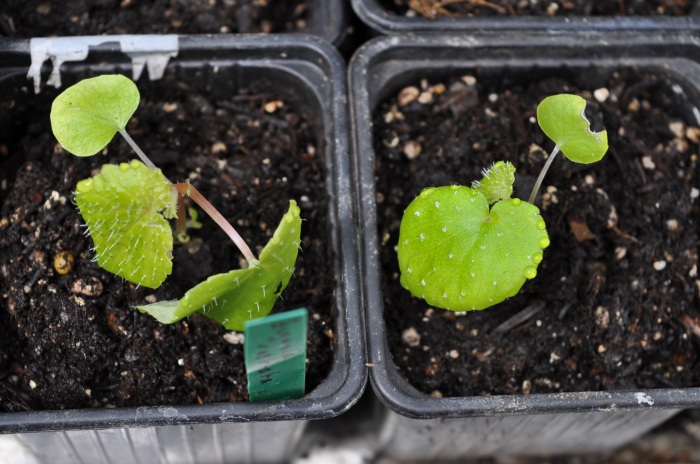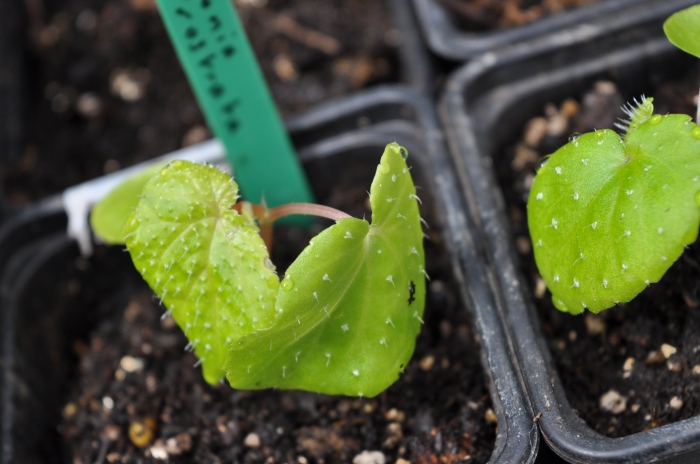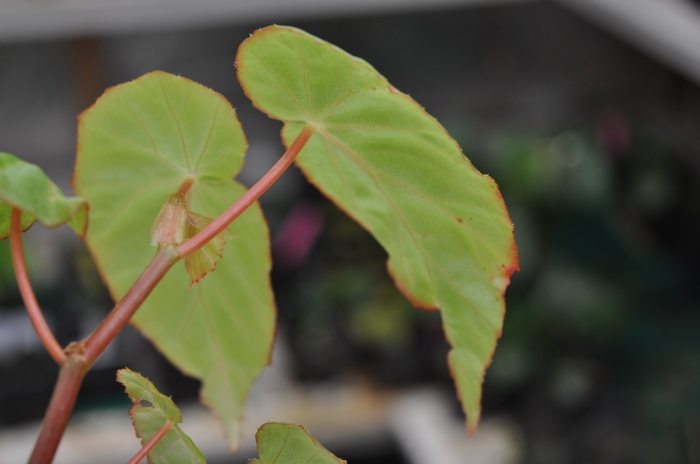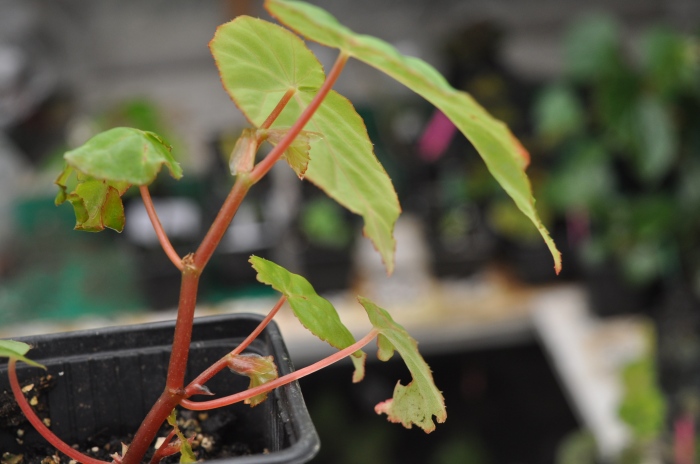Le type de cette espèce, conservé au Royal Botanic Garden de Kew a été récolté au Kenya par le missionnaire James Hannington (1847-1885), à une date et un lieu qui n’ont jamais été précisé (il faut dire que le missionnaire a été capturé, puis sauvagement exécuté sur ordre du roi Mwanga II le 29 octobre 1885). Les graines envoyées en 1884 à M. Mitten ont produit des plantes qui ont fleuri en avril 1886.
Toutefois, la description de l’espèce mentionne un autre inventeur qui a trouvé la plante dans la région du Kilimandjaro. Le note manuscrite « Esq., Recd. Oct., 1884 » laissée par l’explorateur britannique Harry Johnston (1858-1927) qui a répertorié cette plante alors qu’il dirigeait une expédition scientifique au Kilimandjaro en 1884 laisse supposer que la plante a été trouvée en octobre de cette année.
Elle a été décrite en 1886 par le botaniste britannique Joseph Dalton Hooker (1817-1911), dans Botanical Magazine volume 112, planche 6899, à la suite des travaux de son homologue Daniel Oliver (1830-1916).
L’épithète spécifique est un hommage à l’inventeur de l’espèce, Harry Johnston, explorateur, militaire, botaniste, peintre, écrivain et administrateur colonial britannique. Il est l’un des principaux acteurs de la « course à l’Afrique » qui a eu lieu à la fin du XIXéme siècle.
Ce bégonia est originaire d’Afrique de l’Est : Kenya ; Tanzanie où il a été trouvé en divers endroits.
L’espèce fait partie de la section Rostrobegonia.



Buisson ramifié de 30 à 45 centimètres de haut, tiges robustes, succulentes, d’une couleur vert d’eau pâle, striées de rouge écarlates, ainsi que les longs pétioles, feuilles d’une quinzaine de centimètres, obliquement ovales, crénelées arrondies, très asymétriques, inflorescences en cyme portées par un long pédoncule de 5 ou 6 fleurs roses au printemps.
Il existe une forme B. johnstonii f. pilosa Irmscher
Multiplication par semis.
The type of this species, kept at Kew’s Royal Botanic Garden, was harvested in Kenya by missionary James Hannington (1847-1885), at a date and location that was never specified (it must be said that the missionary was captured and savagely executed by order of King Mwanga II on October 29, 1885). The seeds sent in 1884 to Mr. Mitten produced plants that flowered in April 1886.
However, the description of the species mentions another inventor who found the plant in the Kilimanjaro region. The handwritten note « Esq., Recd Oct., 1884 » left by the British explorer Harry Johnston (1858-1927) who listed this plant while leading a scientific expedition to Kilimanjaro in 1884 suggests that the plant has been found in October of this year.
It was described in 1886 by the British botanist Joseph Dalton Hooker (1817-1911), in Botanical Magazine volume 112, plate 6899, following the work of his counterpart Daniel Oliver (1830-1916).
The specific epithet is a tribute to the inventor of the species, Harry Johnston, explorer, military, botanist, painter, writer and British colonial administrator. He is one of the main actors in the « race for Africa » that took place in the late nineteenth century.
This begonia is native to East Africa: Kenya; Tanzania where he was found in various places.
The species is part of the Rostrobegonia section.
Branched bush 30 to 45 centimeters high, stems robust, succulent, pale green in color, streaked with scarlet red, as well as long petioles, leaves about fifteen centimeters, obliquely oval, rounded crenellated, very asymmetrical, inflorescences in cyme carried by a long peduncle of 5 or 6 pink flowers in spring.
There is a form B. johnstonii f. pilosa Irmscher
Multiplication by sowing.
